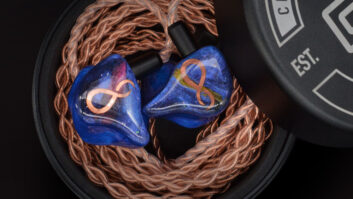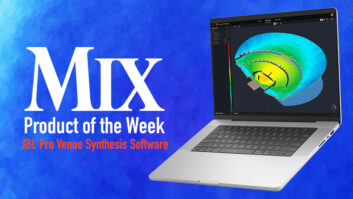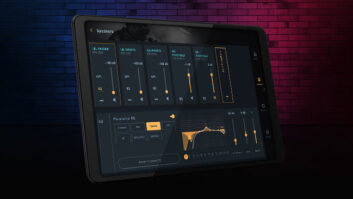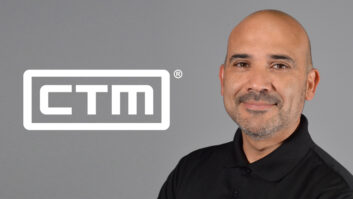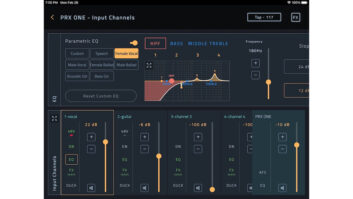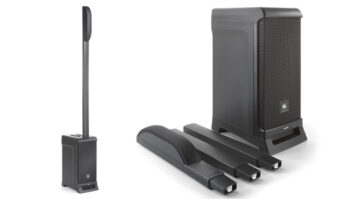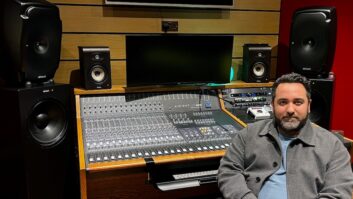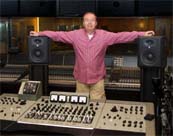
Commemorating the 40th anniversary of the release of The Beatles’ Sgt. Pepper’s Lonely Hearts Club Band, legendary engineer Geoff Emerick (pictured) produced and engineered a remake using JBL LSR6300 Series studio monitors. The project was conceived when Emerick was approached by musician/activist Bob Geldof, who thought it would be a great idea to produce a radio documentary and a TV documentary for the BBC of Emerick re-recording Sgt. Pepper’s using some of today’s top artists and the original equipment.
In the new collection, the original 13 tracks are covered by artists including Bryan Adams, Razorlight, Athlete, Kaiser Chiefs, Magic Numbers, Jamie Cullum, Oasis, Travis, The Zutones, The Stereophonics and The Libertines.
For the recordings, Emerick assembled much of the original equipment used on The Beatles’ album, including two of the original Studer 1-inch 4-track tape recorders and two of the original EMI mixing consoles provided by Mark Knopfler and Lenny Kravitz. Additionally, Emerick borrowed essential vintage AKG microphone models from the AKG Museum in Vienna, Austria. Richard Lush, who assisted Emerick on the original 1967 recording, joined Emerick as assistant engineer on this project, along with Richard Cooper from Knopfler’s British Grove Studios.
With the exception of Oasis’ recording of “Within You Without You,” which was recorded at Abbey Road Studios, the entire album was recorded at British Grove Studios in Chiswick, England, which is home to one of the original EMI mixing desks. Emerick recorded to 4-track tape and mixed in mono.
“Being 4-track recordings, as were the original Beatles tracks, the drums were in mono,” Emerick noted. “The second track was typically bass, guitars or keys, which were all mixed together onto a single track. The third track was allocated to vocals and the last track was allocated to overdubs. So we just used what we had when we did the original.” As with the original Sgt. Pepper project, some of the 4-track tapes were submixed to a second 4-track recorder, providing additional tracks for overdubbing.
Emerick turned to JBL LSR6300 Series studio monitors, as he has for numerous recent projects. “When I’m mixing I like to feel that I’ve captured a moment,” Emerick says. “To me, there’s only one mix, and that’s the real mix. Like lots of engineers, I was having problems when I’d listen to mixes outside of the control room. Often, the relationship between instruments and vocals is not consistent. However, since I’ve started mixing on the JBL LSR Series, the perspective in the mastering room has been exactly the same as in the control room. They have that quality and punch I’m used to getting from the drums and the bass, and the guitars, of course—that really good, solid sound.
“The first rule of the recordings was that we were going to have fun. When I can, I still work in analog, so we were going to [record on] tape. That means if we mess up in the middle of the rhythm track, we go back to the beginning and start recording again. For me, the performance has to come almost in its entirety from the studio floor.”
“I recall an early listening session with the JBL LSR6300s at Capitol Records Studios,” says Peter Chaikin, director of Marketing, Recording & Broadcast for JBL Professional. “Geoff put up a CD of Sgt. Pepper and I watched as he listened intently for certain aural cues from the monitors. As Sgt. Pepper played, I was flooded with images and memories of where we were and what we were doing the summer the album was released. I wondered in that moment if Geoff knew the impact his work has had on so many of us. It is an honor for JBL to be working with Geoff, and for the LSR Series be part of this historic project.”
The documentary recently aired on BBC Television and BBC Radio 2.
For more information, visit www.jblpro.com, http://news.bbc.co.uk/2/hi/entertainment/6711385.stm and http://news.bbc.co.uk/2/hi/entertainment/6749969.stm.
